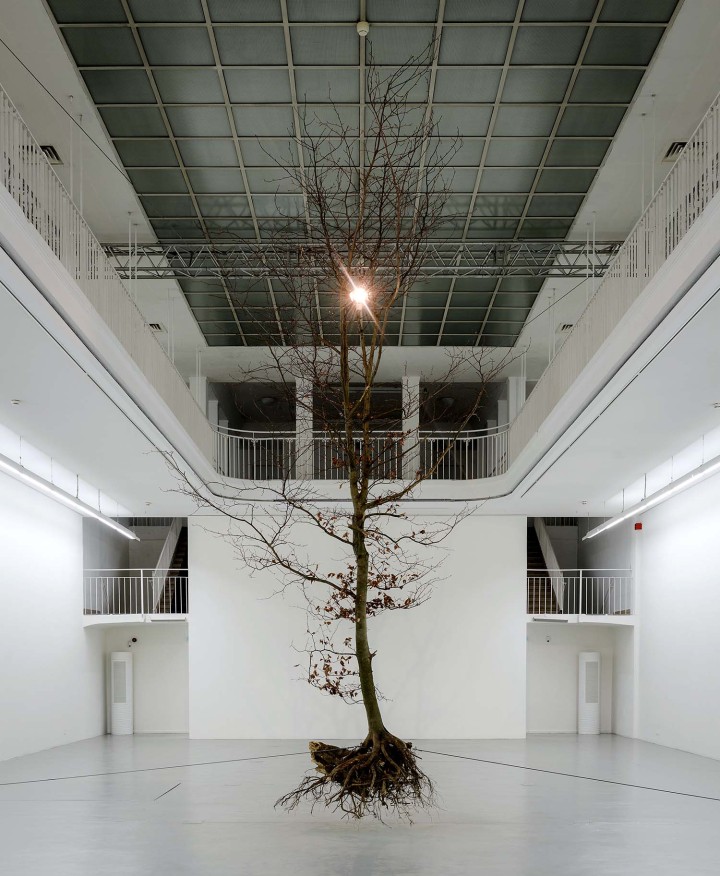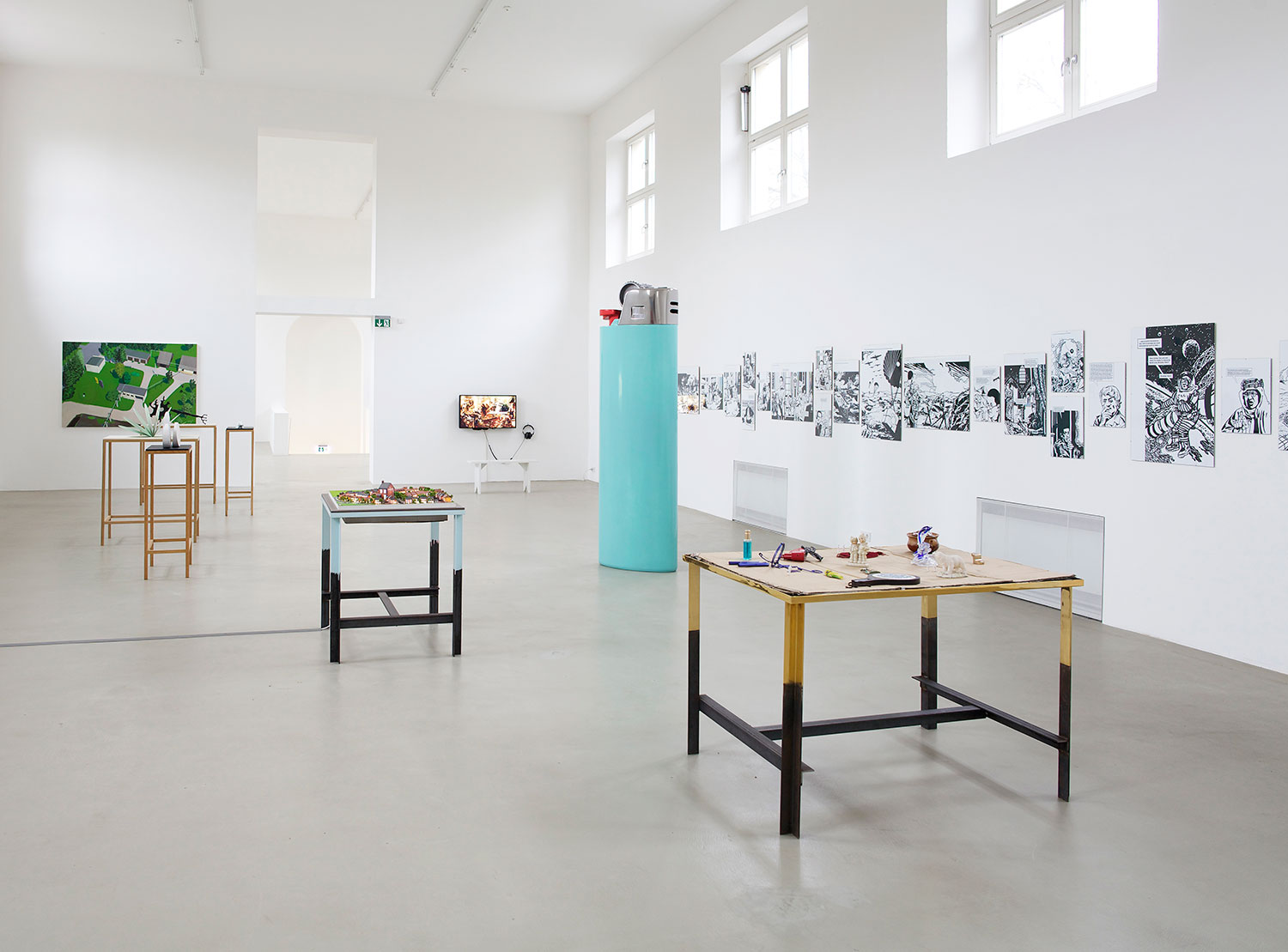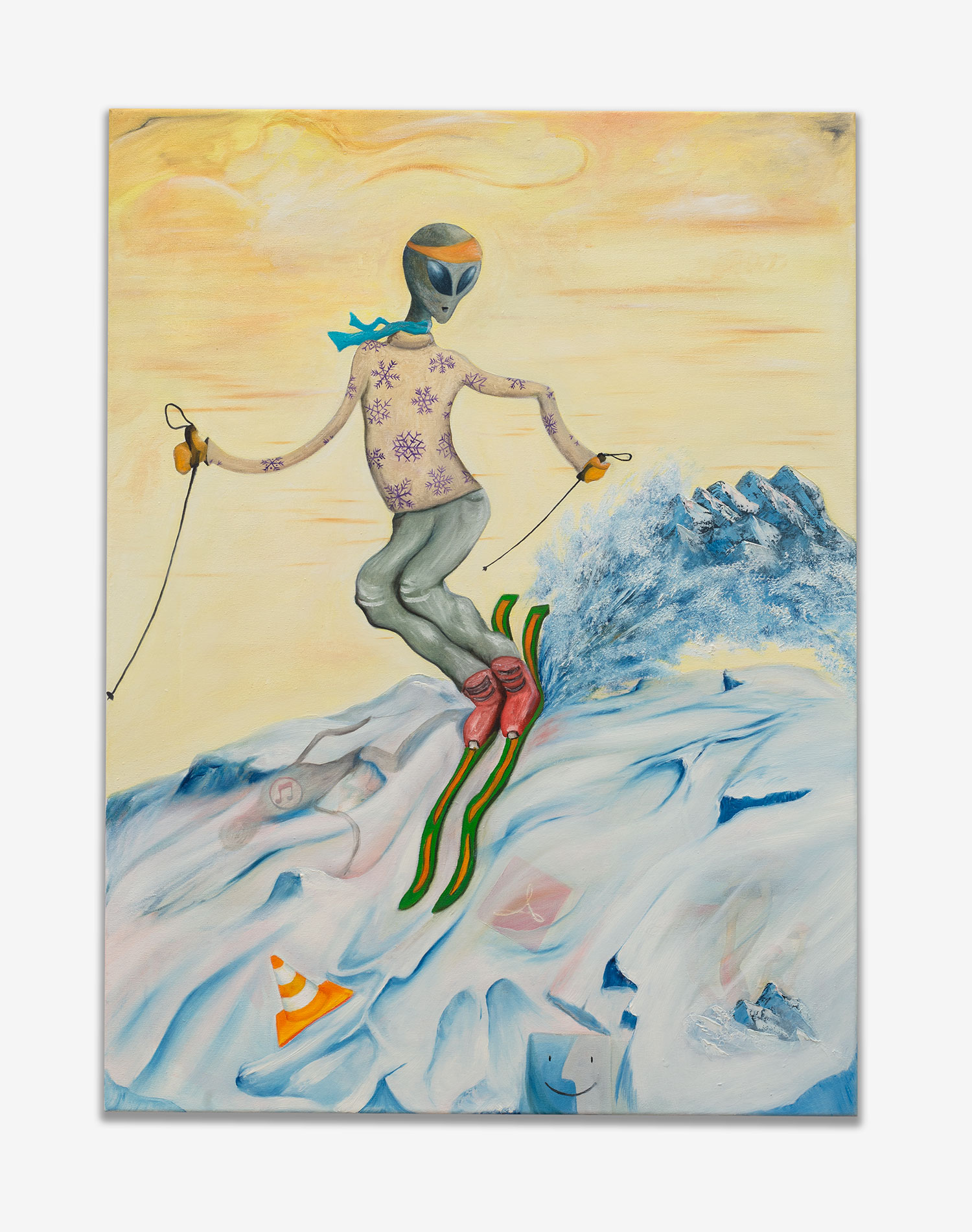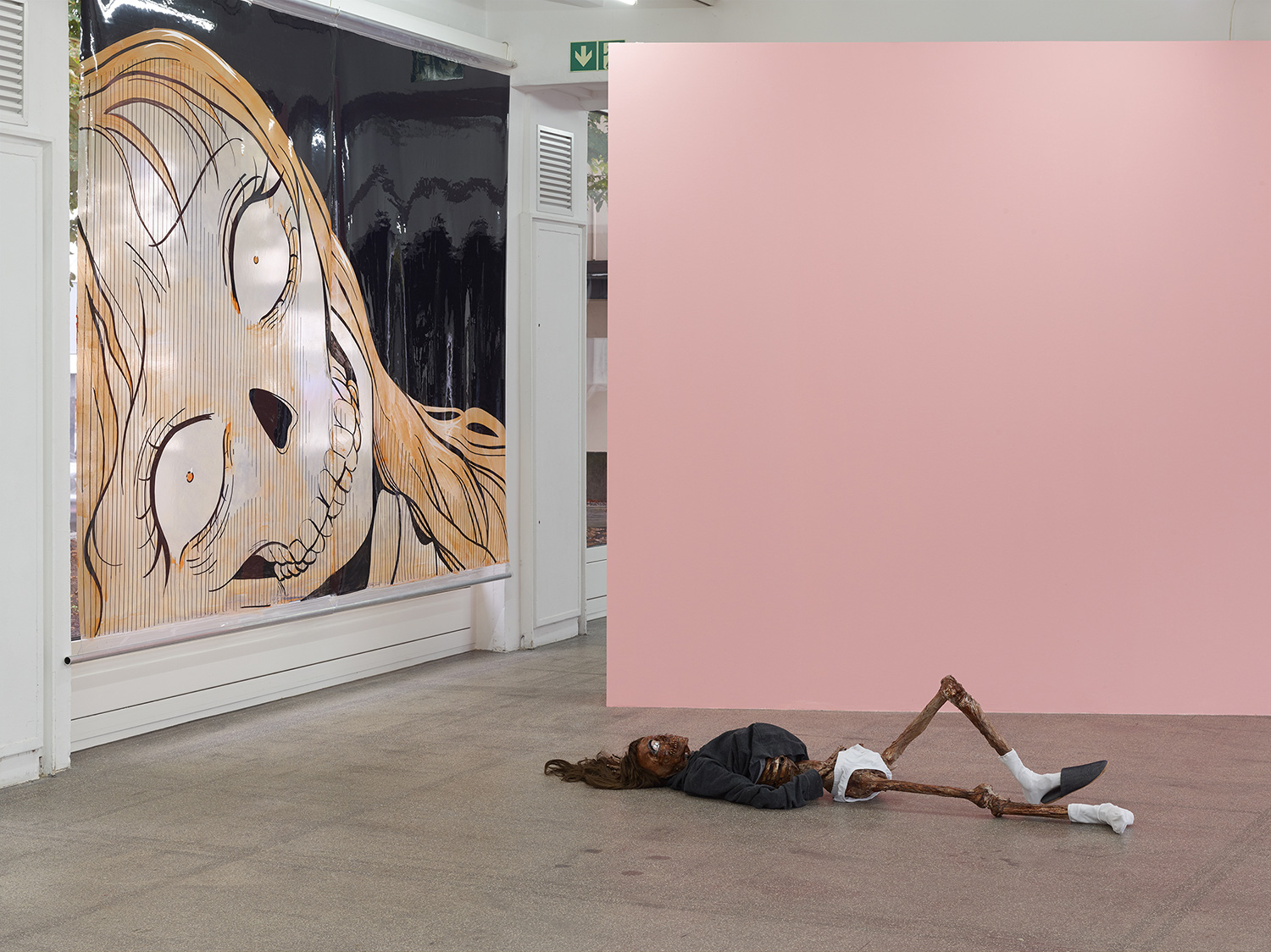A felled beech tree is suspended in the main hall. Swedish artist Henrik Håkansson assumes responsibility for our collective destruction of the natural world, leaving viewer responsibility voluntary or vicarious.
But even the artist’s responsibility is symbolic, because this tree was slated to be felled. Alone in the three-hundred-square-meter space, under two tungsten spots, it casts dramatic shadows onto walls at either end, one specially erected to emphasize the space’s enclosure. The installation measures the hermeticism of its artifice. Hovering off the ground, the tree is sculpture — figurative as well as found object. The fray of uprooting is a sign of the force of Håkansson’s rehoning of the blunted Duchampian conceit of transferring non-art objects into art space.
But not only has the tree become artifice, it has become an image of art. Håkansson encourages the nature he appropriates to assume the guise of art archetypes. The tree echoes the nineteenth-century Romantic motif of the lone tree, or the hanging man of pre-Renaissance crucifixion paintings. Two cables fastening the boughs to an overhead transom, in conjunction with two running from its roots to the walls, evoke two arms and two legs pinned into place. Introducing a modernist angle, a two-by-two-meter monochrome, “painted” with the earth that came up with the tree, is immaculate in a way that belies its violent source, of which we are reminded by the thunderous recording of a falling tree, amplified by a concert-strength public-address speaker standing in a separate room. Top-heavy, it resembles the form of a tree.
Upstairs, overlooking the tree on all sides, 360 photographs are hung in a horizontal line, like a film reel animating the tree’s still life, its arrested growth. They comprise a 360-degree view of a Swedish oak, reiterating the conversion of our experience of the tree into its image. That the tree in the photographs is not the one in the hall, or the one being felled in the recording, breaches the installation’s loop; as the tree, separated from its natural setting, is always pointing back out into the Black Forest above Freiburg from which it was culled.





